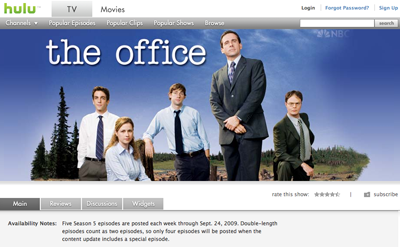By TALYA MINSBERG and NICK CORASANITI
Last December, as 21-year-old Gabriel Medina battled to be crowned surfing’s newest champion on the North Shore of Oahu, millions in his native Brazil stayed glued not to their TVs, but to their tablets, laptops and mobile phones.
An average of more than 6.2 million people tuned in live to watch the Billabong Pipe Masters, where Mr. Medina won his first title. Those numbers exceeded the American television audience for the final game of the 2014 Stanley Cup hockey finals. Not a second of the surfing competition was shown on traditional live television in the United States; instead, it was streamed on YouTube, with 35 to 40 percent of its viewers on mobile.
“It was hard for us to realize a direct relationship to linear TV,” Paul Speaker, the chief executive of the World Surf League, said. “We’re a global sport, so there is always a time zone concern, and we have to wait for swells” — suitable wave conditions — “so we don’t have a start time and an end time like other sports.”
The World Surf League’s successful web-first broadcast strategy is at the leading edge of a gradual transformation taking hold in sports television. As more and more viewers move online and audiences become more global, the professional leagues have all adopted streaming as an important way to attract younger fans around the world. But the purity of surfing’s model — reaching millions of viewers online without being beholden to exclusivity contracts with broadcast and cable networks — demonstrates the power of online audiences for sports big and small.
The control room during a tour event last year. The World Surf League broke its viewer records in 2014, a trend it hopes to repeat.
“It’s one of those things where there’s a lot of fans out there,” explained Matt McLernon, a spokesman for YouTube. “But they’re not necessarily combined enough into a media market where it makes sense to put this sporting event on TV. But when anyone can watch it online, you open up a whole concept.”
All of the major sports leagues have embraced this reality. The N.H.L. recently teamed with the camera maker GoPro this year to bring real-time highlights shareable on social media like Twitter and Facebook. The P.G.A. tour is trying something similar with GoPros and the tour’s online network, Skratch TV. The N.B.A. has the biggest YouTube sports audience with 2.5 billion videos viewed, nearly all through highlights. It also streams its “D” League games online, and joined with Tencent to stream N.B.A. games live in China.
But the big sports leagues, which still receive billions of dollars in lucrative programming contracts from traditional television networks, still mostly supplement their television broadcasts with online highlight packages and subscription-based web services. Adam Silver, the commissioner of the N.B.A., recently emphasized the primacy of the traditional broadcasting model.
“We think there’s a demand to get live games on mobile devices, but it will ultimately supplement the premium content that they are providing through cable and satellite,” Mr. Silver said at a news conference in October announcing new deals with Turner and ESPN, noting “the value of live sports in a DVR world.”
From left, the surfers Kelly Slater, Peter Mel and John John Florence at the Billabong Pro Tahiti competition in August.
Professional surfing, on the other hand, has adopted an online-first approach. Its strategy is the brainchild of ZoSea Media Holdings, which acquired the Association of Surfing Professionals in 2013 and, at the start of the 2015 season, rebranded it as the World Surf League. The surfing association had operated as a loosely affiliated group of fiefs, but Mr. Speaker, a former marketing executive at the N.F.L., eliminated the balkanized structure and created a single broadcast platform.
YouTube then approached the newly formed World Surf League to become their exclusive global digital partner, providing their streaming software to be embedded on the league’s new website, as well as on YouTube’s site and apps. The W.S.L. has not jettisoned the networks altogether — it has teamed with a few select regional channels like MCS Extreme in Europe for live broadcasts, and a few national networks like ABC for highlight and prepackaged shows.
“Our strategy has been, since the beginning, let’s remove all stop signs and turn them into welcome mats,” Mr. Speaker said. “YouTube has that footprint.”
In making everything available online, the W.S.L. has solidified its growth in a key demographic: More than 67 percent of its audience is between 25 and 44 years old. Engagement across their Facebook, Twitter, Instagram and Snapchat accounts nearly doubled, while simultaneously dwarfing engagement rates of larger, more established leagues. The N.F.L.’s Facebook page has some 12.5 million likes compared with the surfing league’s 2.3 million likes. Yet the engagement that the league has per post — likes, comments and shares — is on par with the N.F.L., according to data provided by the organization.
In a few months, the surfing league will be opening W.S.L. Studios, a 6,000-square foot production space in its Santa Monica, Calif., headquarters. The studio will be heavily investing in creating programming to fill gaps during live broadcasting, but will also be exporting shareable and original shows, documentaries and highlight reels, something akin to N.F.L. Films in football’s earlier days.
The World Surf League would not disclose its revenues, but they are tiny compared with the major professional sports. As audiences continue to move online, though, smaller sports are also capturing larger audiences. Executives at the surfing league are stoked, to use surfing parlance, about its new World Championship Tour season that starts on Saturday with the Quiksilver Pro Gold Coast event in Queensland, Australia. After the W.S.L. continually broke its own audience records during the 2014 World Championship Tour, the league is hoping to continue the trend.
“We look to other sports for direction and examples, but for us, live streaming is our bread and butter,” Mr. Speaker said. “I think many people will be looking at us and say, ‘How’d they figure it out?’ ”



